
Author Archives: suburban tracker
THE STATE OF POETRY

The state of poetry
does not hold a secret to any of you.
It does not sell and has scattered,
after having been much prized.
So have pity on the poets,
for they are like the dead among the living
because of their impoverishment.
by Rifa’a Rafi’al-Tahtawi, 19th century, Egyptian imam & author
VAGABOND ESCAPE
In the white waters a seemingly paradoxical option emerges all of a sudden from the depths of mind which commands to insist vividly on the rule of vague exceptions and while following this intuitive desire to drift away on the waves of a final eternal ambition. Only a little bit later in the sphere of phantastic probabilities, the restless vagabond approaches subsequently the all penetrating net with speed of light where cause and effect of intentions are mututally eliminating and reversing themselves in a material torrent of final escape. Then it is the right time to start simply another game on such playing ground as a haunting gamechanger in green. When boosting to the end point of this windy confused route of these endless imaginary grasslands, to begin the eternal play another time again and again …
Ummet Ozcan – Kalimba -, 2023
SCISSORS AND GLUE – HIS ARMORY
Sometime ago we had the opportunity to visit the former summer refuge of John Heartfield (1891-1968). During the Third Reich this German political artist (graphic artist, stage designer and cartoonist) used to be no. 5 on Gestapo’s most wanted list.
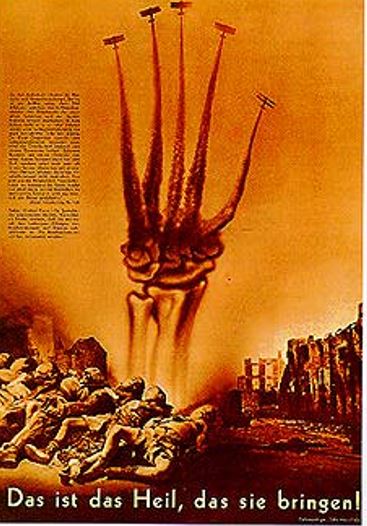
This is the “happiness” that they bring! (from: AIZ, June 1938)
John Heartfield is considered the inventor of political photo montage, collages of text and imagery found in mass-produced media, revolutionary when viewed in terms of technique and aesthetics. His powerful and satirical works in the late 1920s und 1930s became real icons in the struggle against the Nazis.

The real meaning of the Hitler salute. The little man asks for big gifts.
I’ve got millions standing behind me. (from: AIZ, October 1932)
John Heartfield was also a pacifist, and he was deeply disgusted by the fierce and unrestrained nationalism leading finally to World War I. Therefore in 1916 he anglizised his original German name Helmut Herzfeld as a sign of protest. In order to escape the imminent military service, he feigned a mental illness and subsequently had to stay in a lunatic asylum for several weeks. By this unusual proceeding he avoided to be drafted to the man-eating frontlines of World War I.

War and corpses. The last hope of the rich. (from: AIZ, June 1932)
Heartfield himself has repeatedly referred to the key experience of World War I, above all to the unprecedented role of image propaganda in the war riot: it would have given impetus how people were lied to with photos. As a result, he was brought into internal opposition to these visual worlds and was tempted to use the corrupted propaganda instrument photography as an educational tool; also, of course, because the trivial mass medium of photography was not considered an artistic medium of expression at the time.

Self-portrait with police commissioner Zörgiebel, 1929
In 1916, on a May day, early in the morning at 5 o’clock, the photo montage is said to have been born as an artistic technique. Well that’s how George Grosz, who claims to have been there, later remembered when John Heartfield, the “Chief Johnny” from the Berlin Dada circles, invented it.

Advertisement design for George Grosz’ “Little Art Folder”
It was at least partly due to his relationship with George Grosz that John Heartfield arrived at the conclusion that the only art worth creating was that which depicted and commented on social and political issues. Hence he destroyed all of the art that he had created before World War I. He joined the German Communist Party in 1918, in that same year he and George Grosz became founding members of the Berlin Dada Club. His engagement in this anti-art movement inspired him to working with new materials and an innovative approach concerning photography.

Cover design for Kurt Tucholsky’s book
“Germany, Germany above all”
During the Weimar Republic after World War I, John Heartfield’s work was gaining a lot of exposure in Germany as he was a regular contributor to diverse journals and newspapers. His brother, author and companion Wieland Herzfelde founded and run Malik Verlag, a publishing house for books and satirical periodicals as well. Here he served as the in-house designer and advanced his skills as a book designer. During the 1920s John Heartfield worked also together with Erwin Piscator (founder and director of the Proletarian Theatre in Berlin), for him he designed diverse sets for plays in collaboration with playwright Bertold Brecht who became a real friend.

Cover design for Harry Sinclair Lewis’ book
“How you make dollars”
“If I were not Peter Panter, I would like to be a book cover at Malik publishing house. This John Heartfield is really a little wonder of the world. What enchanting things he does!” (Kurt Tucholsky, 1932)

Göring, hangman of the Third Reich (from: AIZ, September 1933)
His best-known works comprise the combative photomontages created for AIZ, Arbeiter Illustrierte Zeitung (Workers’ Illustrated Newspaper), a widely circulated left-wing German weekly that he worked for from 1927 to 1938. During this time he created more than 230 images with strong pointed political messages, often to be seen on the front or back cover.
His commentary was chiefly reserved for Nazi actions and party leaders. When the Nazis came to power in 1933, Heartfield and his anti-Nazi imagery were immediately targeted. With the Nazis on his heels, he left Berlin on foot for Prague, where he continued to work for AIZ. In 1938, when the Nazi invasion of Czechoslovakia was imminent, he was forced to flee again, this time to London.

Reservations – Jews driven like cattle (December 1939)
While he succeeded in escaping the Gestapo (Nazi secret police) when in London the British secret service MI5 began to monitor him as a possible Soviet spy and communist. However, he continued to produce his biting photomontages on current political events being published in various British newspapers. Reservations (showing the ghettoisation of Jews in Poland) means his last published political work in the United Kingdom shortly before he got interned as an enemy alien in December 1939. After internment and long illness, he then primarily designed the covers of generally apolitical books for the Lindsay Drummond and Penguin Books publishing houses.

Stage set projection for Bertold Brecht’s “Mother Courage”, 1951
In 1950 after 17 years in exile he returned to his now communist homeland in East-Germany. Here he met his brother Wieland Herzfelde again who survived the Nazis in US American exile. After staying the first time in Leipzig, John Heartfield settled finally in East-Berlin, his hometown. His long years in London raised suspicions of treason among the East-German secret police named Stasi. Renowned artists and friends like playwright Bertold Brecht and author Stephan Heym supported him and advocated for his kind of art. But only after Stalin’s death he got fully rehabilitated in 1956 by election to the East-German Academy of the Arts. In 1960 he became a professor there.
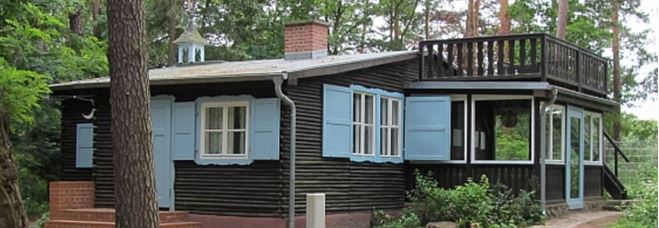
The summer house of John Heartfield in Waldsieversdorf near Berlin
The summer house was erected in 1957 from demolition wood of Strausberg Airport, a small forestial idyll with direct access to a beautiful lake. His friend Bertold Brecht urged him to this step for improving his poor health. As of 2009 the premises serves as a small museum, memorial and meeting place visitable on weekends.

John Heartfield in the early 1950s
Since his death his work has been exhibited regularly throughout the United States and Europe. A very comprehensive exhibition named Fotografie plus Dynamit had been shown for example 2020 in Berlin, London and Zwolle. In Summer 2023 his works could be seen at Literaturhaus in Salzburg, Austria, under the topic DADA ist Gross, John Heartfield und Salzburg. Actually the John Heartfield Haus near Berlin at Waldsieversdorf can be visited each Saturday and Sunday from 1 p.m. until 5 p.m. under the following adress: Schwarzer Weg 12, 15377 Waldsieversdorf, Germany.
In light of strengthened right-wing radicalism and uprising chauvinist hatred, Heartfield’s work remains up to date till today.
++++++++++++++++++++++++++++++++++++++++++++++++++++++++++++++++++++
John Heartfield, Art As a Weapon, Part I, 2023
BEE-EATERS / PROFITEERS OF CLIMATE CHANGE
Visiting the northernmost breeding area of these multicolored summer guests
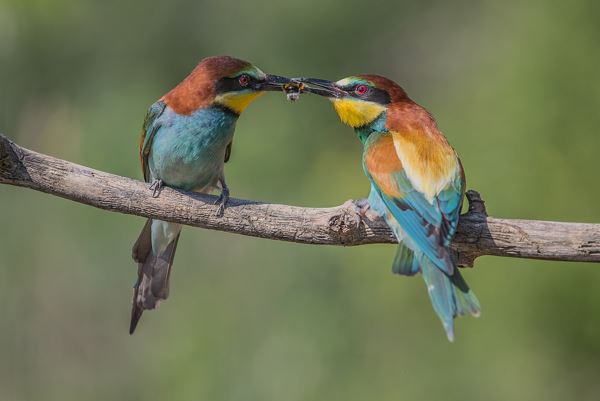
Photo by Hwbund in the Kaiserstuhl area, Germany, 2017, CC BY-SA 4.0
This seemingly tropical bird has only been resettling in Germany since the 1990s, but since then with steadily and exponentially increasing population numbers. The population here in 2023 amounted approximately to 2,500 breeding pairs. The colourfulness of the bee-eater is exotic, because hardly any other breeding bird in Germany has such colourful plumage. Because of this northward spread the bee-eater is often described as the winner of climate change. Presumably, rising summer temperatures and decreasing precipitation are probably factors contributing to the northward spread of the species. As a long-distance migrant, the bee-eater spends the winter in southern Africa. It is in its breeding grounds in the North from May to August.

Summer residence of the bee-eaters – a gravel pit near the village of Gerswalde (district Buchholz), Uckermark
Nowadays, the fabulous bee-eaters made their way even to the very northeast of Germany close by the city of Prenzlau where they live in an operating surface mine which produces sand and gravel. In July 2020 I joined an ornithological excursion to this site led by the fabulous ornithologist Derk Ehlert who is also the responsible Wildlife Officer of Berlin. Fortunately, weather was fine so the bee-eaters were very active outside of their nesting caves – at that time 6 breeding pairs. Once a bee-eater even flew over our heads, but the birds live inside the pit, a restricted area, so we could watch them usually only from a distance of 200-250 m. They usually arrive at this site around 10 June and as real migrating birds leave again by 31 July when they will have already raised their brood.
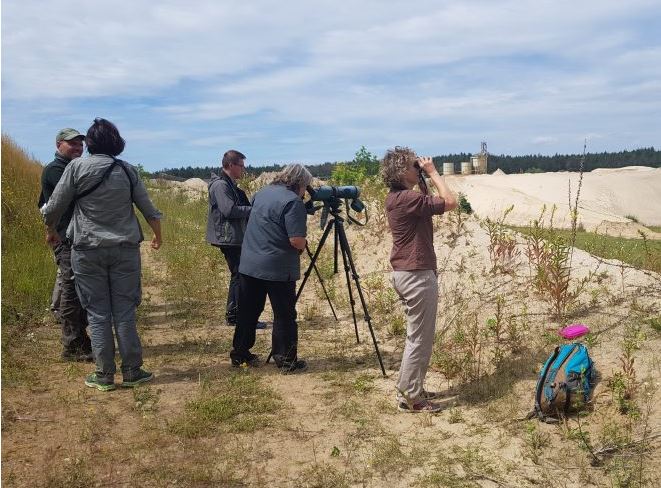
Spotting scopes and binoculars required for observation of birds
Bee-eaters (merops apiaster) belong to the bird genus merops, a name emerging also in Greek mythology. There, Merops used to be the mythical king of the Meroper on the Greek island of Kos who had been transformed to an eagle by the goddess Hera. And the bee-eaters also like the Mediterranean area and prefer warm climate zones.

Flowery view on the technical facilities of the gravel pit
The bee-eater was considered extinct in Germany at the end of the 1980s. His habitat is open landscapes with individual trees and bushes, and the birds breed in dug caves on steep slopes. All what the birds require can be found in this gravel pit very well, and even when temperatures are not too high, the white sand here is heated by the strong July sun, so it should be always quite cozy for these birds.

Bee-eaters in typical mode, photo: Axel Beck
Bee-eaters are often found in colonies. They like to sit, usually together with their peers, on outstanding branches, wires and masts. Through the spotting scope I myself could see 5 birds sitting on a distant bush in July 2020, so maybe they just had a small siesta talk.

In a hill next to the gravel pit some holes and abandoned nest caves which might also be the work of black-tailed swallows (riparia riparia)
I found the place very fascinating, the mixture of technology, archaic steppe and wildlife an interesting symbiosis. The bee-eaters have seized a new living space here in the North where they apparently feel quite comfortable in Summer.
***************************************
Phillip Boa & the Voodooclub, Like a Happy Reptile, 2023
MODERN HADES
What lies behind this dazzling revolving back-door? Curiosity slowly opens the dark labyrinth to arrive in contemporary dreams and seclusion. But these postmodern traces of rusting mysteries really do not allow an escape to more elusive desires, for a new day has just begun in these truly forgotten playgrounds ….
COOL PLEASURES
I like the winter time very much and when the weather is dry, sunny and also quite cold then, suddenly a complete clarity can spread in our minds. So the month of January – which is also my birth month – is always something special for me in the annual cycle, when the old year is still present after a new year has already begun. This is possibly why the ancient Romans dedicated this month to their ancient god Janus, better known as the god with two faces, who symbolised both beginnings and endings for them – the spirit of entrances and exits.

Icy mountain station on the Fichtelberg (1,215 m) near the German-Czech border
January is usually also the coldest month in the northern hemisphere and begins nine or ten days after the winter solstice, which here means the shortest day of the year and a very long night – a day that is also very important for past cultures and earlier civilisations. In the ancient Celtic cycle of the year, the so-called ‘Raunächte’ begin soon after at midnight on 24 December and last until sunrise on 6 January. For our ancestors, these were truly holy nights, a time spent with family and festivities, in other words, what today is more profanely called the Christmas season.

That’s me and my fast luge in action
Of course, this must also be a good time to really enjoy winter in the mountains, when snow crystals in thick layers cover trees and bushes, hills and meadows, houses and paths in sometimes mysterious and strange ways, inviting you to move on to the distant horizon.

Endless forest path in snowy disguise
And after such a walk through the white-painted woods, it’s time to dive into the real soundtrack of winter: The Walrus Hunt by The Residents is one of my favourite songs. And now welcome to the real north, the home of the Inuit.
HAPPY NEW YEAR 2024!
Jan Tracer – Hypersonica – 2023
TIME FOR A SIESTA

The vast poetry of empty streets and colorful houses leaves a lot of space for imagination and dreaming following irrevocably very old ambitions. At noon the sun now moves slowly around the very next corner where the shadows shrink to minimalistic images of black, white, blue and red. All is slowing down irresistible, and time stands still for a while. A real moment of peace in a world full of archaic, violent and stupid conflicts all over our nice blue planet!
Wishing you a very nice season and a happy new year 2024 🎃💥🥳
*************************************************************************
TUNISIA – WATER, DESERT AND NOMADIC VASTNESS
It doesn’t matter if the road is long, as long as there is a well at the end. (Tuareg proverb)
“A Street in Gadames” by Giorgio Oprandi, 1929.
Water is our cool elixir, which unfortunately is not available everywhere in the world. But as climate change progresses, desert and semi-arid areas around the world will expand even further, while countries like Spain or Italy are already experiencing water shortages in summer.

Here the water still gushes abundantly in the mountain oasis of Tamerza
From the main road between Tabarka and Bizerte we had to drive 15 km over deserted sandy roads to reach Cape Negro, a forgotten and abandoned place on the Mediterranean coast with typical vegetation, a rather cool wind from the sea and also a long sandy beach without other people, there in the area you can also still find the typical cork oak forests.
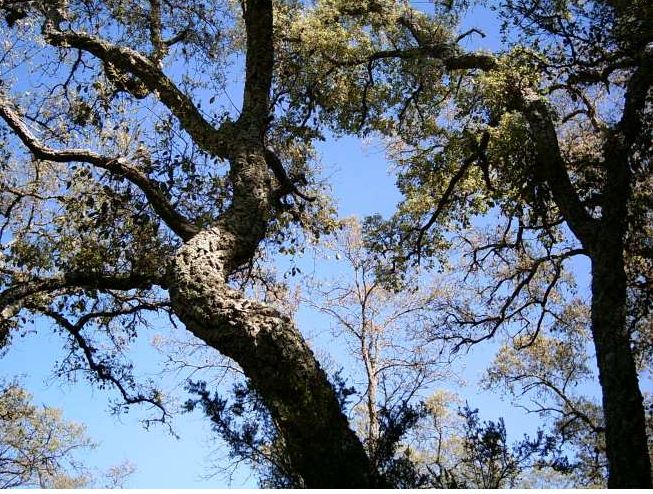
Cork oak in a forest near Tabarka not far from the Algerian border

“Hotel Les Mimosas” in Tabarka
Doesn’t this hotel really look very French? The beautiful place is situated on a small hill and offers a beautiful view of Tabarka and the sea.

Sidi-el-Barrak water reservoir near Nefza
This reservoir in the very green north of Tunisia is also a completely untouristy place, but at this moment in the late afternoon, the mood and the interplay of light, clouds and water revealed something different.

The Atlas massif divides Tunisia, and the great Sahara begins at its southern edge.
Consider that 2,000 years ago, Tunisia was still the granary of the Roman Empire. Since then, the warm period after the last ice age and normal climate change have transformed formerly very fertile areas into vast wastelands and endless desert zones. And the Sahara has not stopped its unchecked expansion to this day.

Cracked desert between Tozeur and Tamerza, Sahara
This photo remains one of my favourite travel memories from Tunisia and shows a single hardy bush in an area of cracked and parched ground, probably due to very rare and heavy rains some time ago.

But where are the legendary dromedaries? Not a single one here.
The photo was taken on the main road coming from the north and Tunis, which is now really deep in the south somewhere between Metlaoui and Tozeur.

The cave dwellings of Matmata, also known as the home of Luke Skywalker in Star Wars.
Halfway between Tozeur and the Djerba Peninsula lies the cave village of Matmata, where people have lived for millennia and which was made wellknown by the famous cult film series Star Wars. The landscape is quite barren with only a few dwellings on the surface, but the magic of Matmata goes deeper and reveals itself to guests when they descend into the unique underground cave dwellings, which offered their inhabitants good protection from extreme cold at night and the burning sun during the day.

Arab Scene in Tunisia, Ernesto Quarti Marchio, 1933
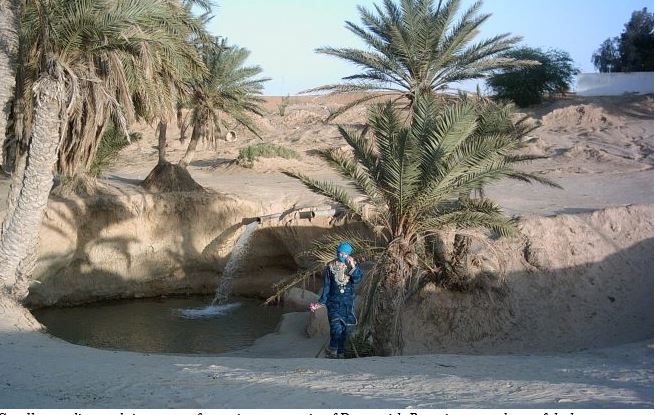
Small paradise and tiny water well near the Douz oasis.
The Sahara desert used to be a vast sea where nomads made their endless sailing trips on dromedaries (not camels), some still do. Nevertheless, I really appreciate the desert (as well as high mountains) as a very purist place with a clear, unlimited view to the distant horizon that can clear your mind and broaden your horizons, a really exciting feeling besides all the known dangers and risks.

Nomadic monument at a road junction in Douz.
The oasis of Douz is a real gateway to the Sahara and today has about 30,000 inhabitants. The desert dunes near Douz are famous because they consist of an incredibly soft and almost white sand. The area is traditionally inhabited by the semi-nomadic Mrazig tribe, an Arab Bedouin tribe that left the Arabian Peninsula in the 8th century and settled in Tunisia in the 13th century. Today, many make their living from date harvesting, and probably the best dates in Tunisia come from Douz, called Deglet en Nour. The “gold of the oasis” is therefore more than just any fruit for the inhabitants of Douz.

Death zone of the huge salt lake Chott-el-Jerid after sunset.
Today, the huge salt lake Chott-el-Jerid can be crossed safely on a solid dam with a road that also connects the oasis areas of Nefzaoua and Tozeur. In the past, such a journey was a dangerous adventure.
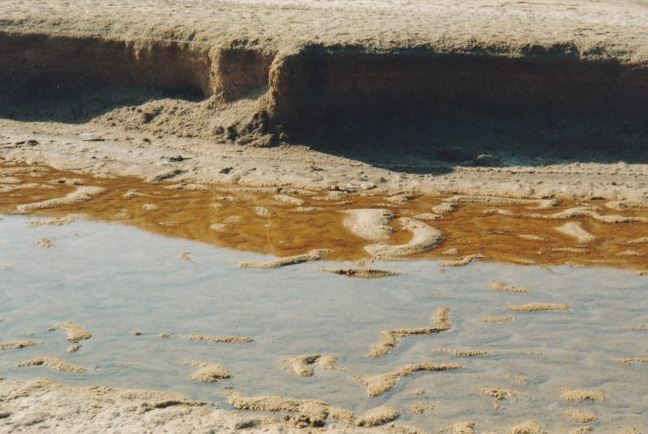
Not suitable for drinking – only the salty water of Chott-El-Jerid

Ruins of the ancient city and mountain oasis of Tamerza
Now this trip here has really become more of a collage of texts, impressions and diverse pictures collected from various places in the vast and beautiful Tunisia.

Breakfast with fresh flower blossoms in the oasis of Tozeur
International Festival of Sahara at Douz 2019
****************

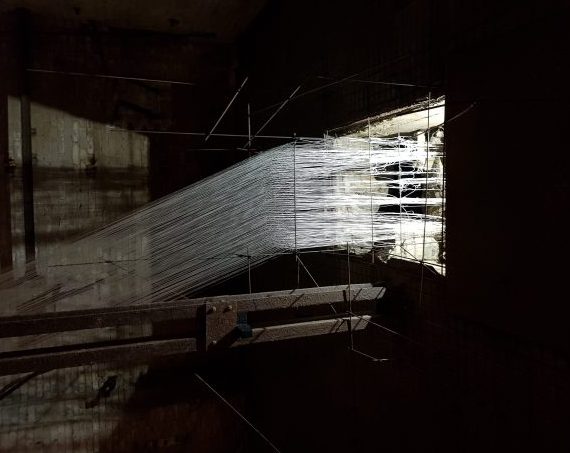

You must be logged in to post a comment.